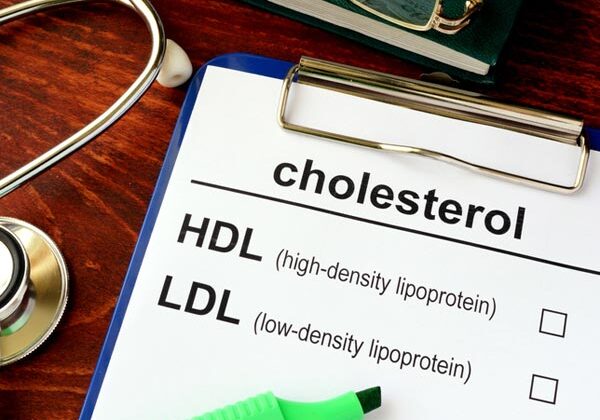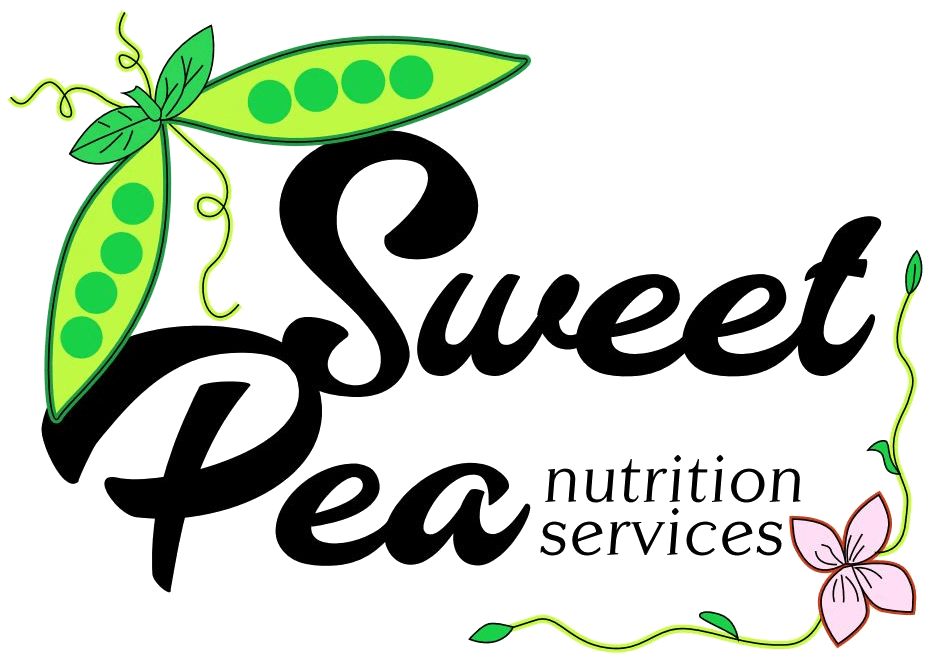Hot Off The Press

As the holidays approach, parties become numerous along with platters of rich and delicious seasonal foods. If you are hosting a gathering this holiday season and want to lighten up your offerings without sacrificing taste, you have plenty of options.
Try swapping out a few ingredients in your favorite recipes with some of these simple tips.
- Try low-sodium vegetable broth in your mashed potatoes to add flavor and cut back on butter or margarine.
- Substitute applesauce for oil, margarine or butter in muffins and quick breads such as banana bread. Try substituting a small amount at first, as too much may change the texture of the finished product.
- For dips and sauces, try using fat-free yogurt in place of sour cream or mayonnaise.
- Try sliced or slivered almonds as a delicious, crunchy topping in place of fried onion rings.
- Choose reduced-fat or fat-free cheeses for salads and casseroles.
Pack your shopping cart with plenty of fresh produce including sweet potatoes, winter squash, broccoli, carrots and green beans. Apples, fresh cranberries and pears combine easily for a tasty salad, fruit crisp or topping for the turkey.
If you are a guest at a dinner party or other gathering, consider these tips to keep your night healthy, happy and safe:
- Try starting your day with a small meal that includes whole grains, fruit, vegetables and some type of lean protein. Skipping meals before the event may tempt some people to overeat later.
- Socialize and settle into the festivities before seeking out the buffet.
- Savor foods you truly enjoy and pass up on those that don't really interest you.
- Move your socializing away from the buffet tables or appetizer trays. This will minimize the unconscious nibbling.
When it comes to alcohol, satisfy your thirst by drinking water first. If you are of legal age and choose to drink, moderate alcohol consumption is defined as up to one drink per day for women and up to two drinks for men.
Keep in mind, even a single drink may affect your reflexes for several hours. If you plan to drink, keep your holidays merry for everyone by designating a driver who won't be drinking.
The holidays are a great time for gathering with friends and family over food and drinks. With just a little preparation, you can enjoy celebratory foods mindfully and still experience all that the season has to offer.

Is your head spinning over the conflicting messages you hear about cholesterol? That’s not surprising. Researchers are learning more about cholesterol and saturated fat. And, as they learn more, nutrition advice may change.
Cholesterol is a waxy substance found in animal-based foods that we eat and also in our body’s cells. Our bodies need some cholesterol to function normally and can make all the cholesterol it needs. Cholesterol in the body is used to make hormones and vitamin D. It also plays a role in digestion.
There are three main types of cholesterol in the body:
- High-density lipoprotein, or HDL. Often called the good cholesterol, HDL helps to remove excess cholesterol from your body.
- Low-density lipoprotein, or LDL. LDL is the bad or “lousy” cholesterol. It can lead to a buildup of plaque in the arteries.
- Very low-density lipoprotein, or VLDL. VLDL also tends to promote plaque buildup.
Another substance included in lipid lab tests is triglyceride levels. Triglycerides are a specific type of fat in the blood. High triglycerides may be a sign that you have excess body fat or may be at an increased risk for Type 2 diabetes. They also may be a signal that you are consuming too many calories, especially from refined grains or foods and beverages with added sugars. Triglycerides also can be elevated in people who smoke or drink too much alcohol.
If there is too much cholesterol in the body, it builds up. The waxy buildup, called plaque, sticks to the insides of the arteries. As the arteries narrow and clog, it is difficult for the blood to flow through them. The blockage can lead to a blood clot, stroke or heart disease.
Am I at Risk?
Many things may increase your risk for high cholesterol, including:
- Genetics: High cholesterol runs in some families.
- Age: As we age, our cholesterol levels rise.
- Medicines: Certain drugs can elevate cholesterol levels.
- Obesity: Individuals with overweight or obese body mass indices are at greater risk for high cholesterol.
- Diet: Consuming high quantities of saturated and trans fats can raise LDL cholesterol levels.
- Inactivity: Activity helps to elevate HDL cholesterol.
- Smoking: Tobacco products decrease HDL and increase LDL. The link between smoking and high cholesterol is greater for women.
High Cholesterol, Now What?
Everyone with high cholesterol can benefit from a heart-healthy lifestyle. However, your doctor might recommend additional support to manage your cholesterol levels, like a cholesterol-lowering drug, especially if your cholesterol is high because of genetics. And, if you are at risk of developing high cholesterol, simple lifestyle changes can help reduce that risk. These include eating a heart-healthy diet, being physically active and achieving or maintaining a healthy body weight.
When it comes to a healthy eating plan, four dietary changes may help keep your cholesterol in check:
Enjoy Foods with Plant Sterols and Stanols
Some foods — fruits, vegetables, vegetable oils, nuts, seeds and whole grains — contain substances called plant sterols and stanols. Eating foods rich in these substances may help combat rising total and LDL cholesterol levels. To increase your daily intake, also look for foods fortified with plant sterols and stanols. For example, some orange juice, cereals and breakfast bars may be fortified.
Limit Your Intake of Saturated Fat
Saturated fats are mostly found in animal-based foods such as meats and whole-fat dairy products. Higher intakes of saturated fat have been found to elevate LDL cholesterol. Studies have also shown that replacing sources of saturated fat with unsaturated fats can help decrease your total and LDL cholesterol levels. To help reduce your intake of saturated fat:
- Cook with vegetable oils, such as olive, canola, sunflower and safflower.
- Eat foods rich in omega-3 fatty acids such as salmon, walnuts and ground flaxseed.
- Choose low-fat or fat-free dairy products, such as 1% or skim milk and non-fat yogurt or low-fat cheeses, such as reduced-fat feta and part-skim mozzarella.
- Swap out butter and lard for vegetable oil options, which offer unsaturated fats.
- Avoid trans fats — they have been found to increase LDL levels and were found in highly processed foods. Food manufacturers have removed trans fats from their products, but some foods with a longer shelf-life may still contain them. Check the amount of trans fat on the Nutrition Facts Label and in the ingredients list. If it says the food contains a partially hydrogenated oil, put it back.
Select Lean Protein Foods
Lean protein foods provide less calories from fat. To choose lean cuts:
- Check the package for the words loin or round.
- Strip the skin off your chicken and turkey to reduce the saturated fat.
- Limit fatty, marbled meats, fried or deep-fried foods and other foods that are high in saturated fat, such as organ meats
- Choose healthier options when eating out by selecting foods that are baked, broiled or grilled.
Savor Soluble Fiber
Dietary fiber is found in fruits, vegetables, beans, lentils and whole grains. These nutrient-dense foods provide two types of fiber, soluble and insoluble. Both types are important for good health. Getting adequate amounts of dietary fiber from a variety of foods is important for everyone.
Research has shown that soluble fiber, in particular, from fruits, vegetables, beans, lentils and whole grains, may help to lower LDL cholesterol. In the stomach, soluble fiber forms a thick, jelly-like substance, which helps bind dietary cholesterol from foods you’re eating. So, load up on vegetables and fruits:
- Select fruits and vegetables that also provide soluble fiber. For example, figs, Brussels sprouts, peaches, carrots, apricots, mangoes and oranges.
- Eat a variety of different colored fruits and veggies.
- Shift to more plant-based or vegetarian meals by including beans, lentils and soy foods.
- Focus on whole forms of produce, which includes fresh, frozen, canned or dried.
- Look for canned fruits packed in water or their own juice.
- Choose low-sodium canned veggies or varieties with no added salt.
Whole grains also are a great way to get the benefits of dietary fiber:
- Eat barley (not pearled) and oats — both of these provide soluble fiber.
- Make sure the food label on your bread says 100% whole-grain or lists a whole grain as one of the first ingredients.
- Limit refined carbohydrates, especially sources of added sugars, such as sweets and sugar-sweetened beverages.
One note of caution: as you increase your fiber intake, also increase your intake of water. This will help to reduce your risk of becoming constipated. If you find it difficult to get enough dietary fiber daily through your foods, ask your health care provider before considering a fiber supplement.
“Together with your children, find ways to help them enjoy the textures, flavors, and nutritional benefits of healthful and tasty foods at every meal, without using pressure or bribes to takes bites,” says Amy Reed, registered dietitian nutritionist and Academy spokesperson.
Learn more at www.kidseatright.org, or consult a registered dietitian nutritionist in your area by visiting “Find a Nutrition Expert” at eatright.org/find-a-nutrition-expert.


